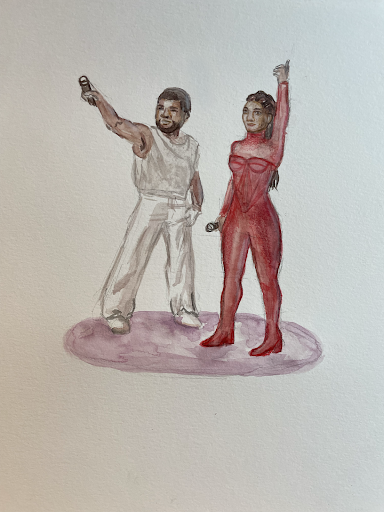Should There Be a Stigma Around Watching Porn?
“Let’s talk about porn” (Photo/Charles Deluvio/ Unsplash)
April 24, 2020
Disclaimer: The legal age to buy pornographic videos and magazines is 18 years old, and most websites are not open to anyone under 18. Please note that, in publishing this article, the Spokesman is not endorsing breaking laws or website regulations, but is instead merely acknowledging the moral and health perspectives surrounding this complex issue.
American society has always been puritanical in avoiding conversations around taboo subjects, especially those having to do with human sexuality. In the past, expressions of sex were exclusive to procreation, and anything more was seen as wrong or immoral. But, as society has evolved over the years, these ideals have slowly begun to change. The liberalization of American society has made sex more accessible than ever before: in advertisements, music, and most importantly, video. The Internet Era has enabled populations to access, produce, and share forms of sexuality on an unprecedented scale.
As with any taboo subject, there are strong opinions and misconceptions derived from pornography as well. American society still attempts to stifle discussion around pornography, even though a majority of teenagers have seen some form of sexual expression in their lifetime. With all the negative conversation surrounding pornography, it’s fair to ask if such a stigma is deserved. Health professionals, such as Director of Wellness Services Maritoni Shah, as well as scientific studies, are helpful in answering these questions.
Scientists and health officials have been studying pornography for years to see if there are possible benefits to its consumption. According to Dr. Shah, “Pornography has shown [many people] how to enjoy sex and sexual acts. It has made individuals more confident in asking partners to experiment and try things and has helped people communicate better about sex. It has made masturbation a more accepted activity and has allowed people to reach sexual satisfaction safe from disease, violence, pregnancy, and other unwanted complications. For people with different sexual preferences than sole hetero male/female intercourse, porn may be the first thing that they find that can validate their urges and their preferences.” Such evidence suggests that there are clear benefits to watching pornography and promoted healthier and safer life styles for many.
In a 2007 public health report, published by the National Center for Biotechnology Information, it was found that the average age of sexual initiation for teenagers is 17. Being exposed to pornography in high school could, then, lessen the shame around sexual desire and allow for both partners to make open decisions with regard to sexual activity. Wouldn’t this consequently make sex safer?
Not necessarily. The conflict comes from whether porn is an adequate educator of sexual health. Although it can teach people to take charge of their own desires, the extent of these desires might not be realistic. “Porn is a money maker and a business,” says Dr. Shah. The most concerning drawbacks of pornography can be accredited to the “unreal expectation of sex, normalization of some sexual acts, objectification of partners–especially female ones.” The most troubling examples come from a lack of contraceptive use, equality, and ethical production. A study published in the Public Library of Science found that porn consumption without the usage of male/female condoms or dental dams doubled the likelihood that the viewer would have unprotected sex themself. Further, the pornographic film industry is dominated by the male gaze, and as a result, gender roles are frequently enforced in an aggressive manner toward female sexual partners. Most importantly, pornography can be exploitative if not regulated correctly. The website Pornhub, in particular, has recently come under a lot of fire for allowing videos of child porn and sex trafficking to remain on their website for days at a time. The pornographic industry looks especially terrible when reminded that the site is profiting off of these injustices.
Though pornography has existed for some time in American culture, there remains very little research about the topic. Because of the rapidly evolving industry and limited data sets, it is difficult for scientists and public health officials to come to one conclusion regarding how good or bad pornography might be. Yet, defining this for certain might not even matter. Dr. Shah concluded, “Labeling porn as good or bad doesn’t [help or hurt] anyone. It does, however, harm us as a culture if we don’t talk about what [pornography] is and what it isn’t.” As long as we continue to break the taboo and discuss the many facets and nuances of pornography, we have the opportunity to give future generations the proper knowledge to make that decision for themselves.

















